-
 bitcoin
bitcoin $123963.239194 USD
1.37% -
 ethereum
ethereum $4529.082464 USD
1.07% -
 xrp
xrp $2.983640 USD
0.71% -
 tether
tether $1.000287 USD
0.02% -
 bnb
bnb $1179.874393 USD
2.99% -
 solana
solana $230.633678 USD
1.55% -
 usd-coin
usd-coin $0.999835 USD
0.03% -
 dogecoin
dogecoin $0.254240 USD
1.34% -
 tron
tron $0.341176 USD
0.15% -
 cardano
cardano $0.842285 USD
0.52% -
 hyperliquid
hyperliquid $48.537896 USD
-0.86% -
 chainlink
chainlink $21.863092 USD
-0.84% -
 ethena-usde
ethena-usde $0.999743 USD
-0.07% -
 sui
sui $3.579561 USD
-0.18% -
 stellar
stellar $0.403418 USD
2.67%
What is DeFi's governance mechanism?
In DeFi's decentralized model, token holders wield voting power based on their holdings, shaping protocol development, risk management, and feature enhancements through on-chain or off-chain voting mechanisms.
Feb 16, 2025 at 05:06 am
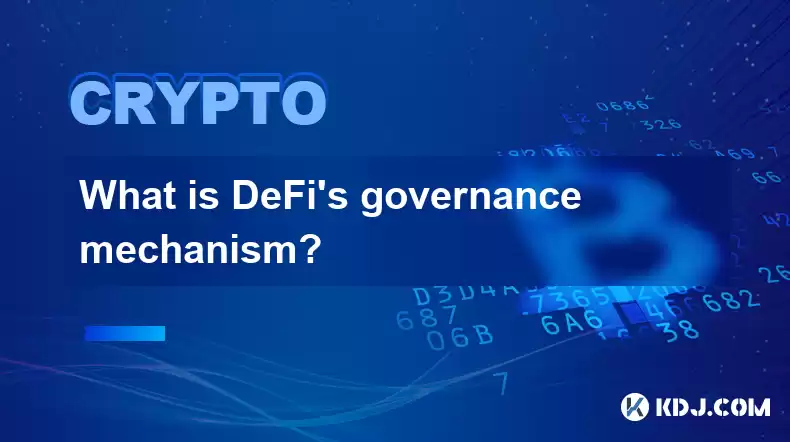
- Understanding the Decentralized Nature of DeFi
- Voting Mechanisms in DeFi Protocols
- Token-Based Voting Power and Decision-Making
- Consensus Mechanisms and Protocol Parameter Management
- Delegate Voting and Tokenomics Considerations
- Case Studies of Popular DeFi Governance Mechanisms
Decentralized Finance (DeFi) has emerged as a revolutionary force in the financial realm, promising greater transparency, accessibility, and autonomy compared to traditional financial systems. At the heart of DeFi lies its governance mechanism, which empowers token holders to collectively shape the protocols and platforms they interact with.
Understanding the Decentralized Nature of DeFiUnlike centralized institutions with top-down leadership structures, DeFi operates on a decentralized model. This means that decision-making power is distributed among a wide network of participants, eliminating single points of failure and promoting community involvement.
Voting Mechanisms in DeFi ProtocolsDeFi protocols typically incorporate various voting mechanisms to facilitate governance. These mechanisms allow token holders to express their opinions and influence key decisions related to protocol development, risk management, and feature enhancements. Voting mechanisms can vary depending on the specific protocol but commonly involve:
- On-Chain Voting: Decisions are made through direct on-chain voting, with each token holder's voting power proportional to their token holdings.
- Off-Chain Governance: Proposals are discussed and voted on in off-chain forums or through third-party voting platforms. The results are then executed on-chain.
- Snapshot Voting: A specialized tool that allows token holders to vote on proposals without locking up their tokens.
In DeFi, voting power is typically determined by the number of tokens held by each participant. This implies that individuals or entities with a larger stake in the protocol have a greater say in shaping its future. Voting mechanisms often involve majority rule or weighted voting schemes, where proposals are approved or rejected based on a threshold of votes.
Consensus Mechanisms and Protocol Parameter ManagementGovernance mechanisms in DeFi also play a vital role in managing protocol parameters, such as reserve ratios, interest rates, and protocol fees. Consensus mechanisms, such as Proof-of-Work or Proof-of-Stake, are utilized to ensure that changes to protocol parameters are validated by a majority of network participants.
Delegate Voting and Tokenomics ConsiderationsTo enhance participation and address issues related to voter apathy, DeFi protocols often implement delegate voting systems. This allows token holders to delegate their voting rights to trusted individuals or organizations known as delegates. Delegates then represent the interests of their constituents and vote on proposals on their behalf.
Tokenomics, the distribution and allocation of tokens, also plays a significant role in shaping DeFi governance. Protocols typically design tokenomics to incentivize active participation, reward long-term token holders, and ensure a balanced distribution of voting power.
Case Studies of Popular DeFi Governance MechanismsUniswap: Uniswap employs a governance system centered around UNI tokens. UNI token holders can vote on protocol upgrades, fee adjustments, and token distribution.
Compound: Compound's governance mechanism is based on COMP tokens. COMP holders can propose, vote on, and implement changes to the protocol's lending and borrowing parameters.
MakerDAO: MakerDAO utilizes the MKR token as its governance token. MKR holders have the authority to control the Dai stablecoin's stability mechanisms, including the Dai Savings Rate and the Stability Fee.
FAQs:- How does governance differ in different DeFi protocols?Each DeFi protocol has its unique governance mechanism tailored to its specific needs and objectives.
- What are the advantages of decentralized governance in DeFi?Decentralized governance promotes transparency, community involvement, and protection against censorship or unilateral decision-making.
- How can I participate in DeFi governance?To participate in DeFi governance, you typically need to acquire the native tokens of the protocol you are interested in and actively participate in voting and discussion forums.
- What is the role of delegates in DeFi governance?Delegates represent token holders who do not actively participate in governance. They vote on proposals on behalf of their constituents.
- How does tokenomics affect DeFi governance?Tokenomics incentivizes participation, rewards long-term holders, and influences the distribution of voting power. Effective tokenomics can create a more balanced and engaged governance environment.
Disclaimer:info@kdj.com
The information provided is not trading advice. kdj.com does not assume any responsibility for any investments made based on the information provided in this article. Cryptocurrencies are highly volatile and it is highly recommended that you invest with caution after thorough research!
If you believe that the content used on this website infringes your copyright, please contact us immediately (info@kdj.com) and we will delete it promptly.
- BlockDAG, DOGE, HYPE Sponsorship: Crypto Trends Shaping 2025
- 2025-10-01 00:25:13
- Deutsche Börse and Circle: A StableCoin Adoption Powerhouse in Europe
- 2025-10-01 00:25:13
- BlockDAG's Presale Buzz: Is It the Crypto to Watch in October 2025?
- 2025-10-01 00:30:13
- Bitcoin, Crypto, and IQ: When Genius Meets Digital Gold?
- 2025-10-01 00:30:13
- Stablecoins, American Innovation, and Wallet Tokens: The Next Frontier
- 2025-10-01 00:35:12
- NBU, Coins, and Crypto in Ukraine: A New Yorker's Take
- 2025-10-01 00:45:14
Related knowledge

How to track DeFi activity on a block explorer
Sep 04,2025 at 05:36pm
Bitcoin's Role in Decentralized Finance1. Bitcoin remains the cornerstone of the cryptocurrency ecosystem, serving as both a store of value and a benc...
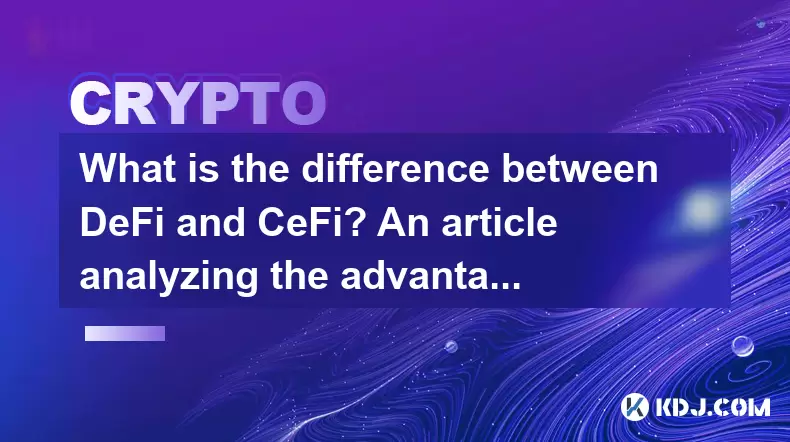
What is the difference between DeFi and CeFi? An article analyzing the advantages and disadvantages of both
Jun 13,2025 at 03:57am
Understanding the Foundations of DeFi and CeFiTo fully grasp the difference between DeFi (Decentralized Finance) and CeFi (Centralized Finance), it’s ...
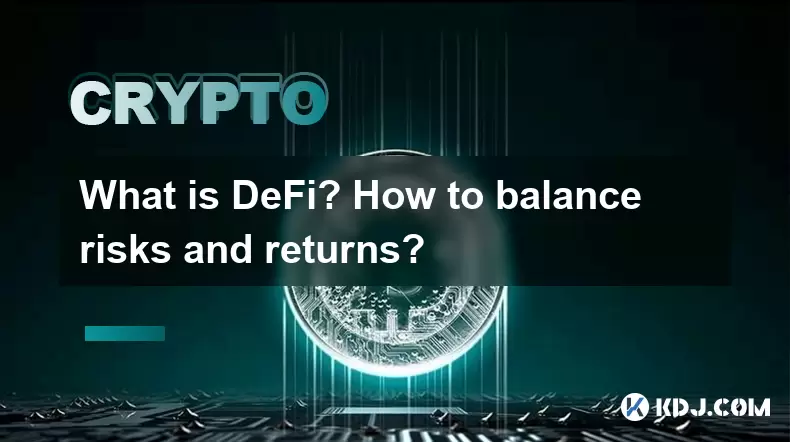
What is DeFi? How to balance risks and returns?
May 31,2025 at 12:22pm
What is DeFi? How to Balance Risks and Returns? Decentralized Finance, commonly known as DeFi, represents a revolutionary shift in the financial ecosy...
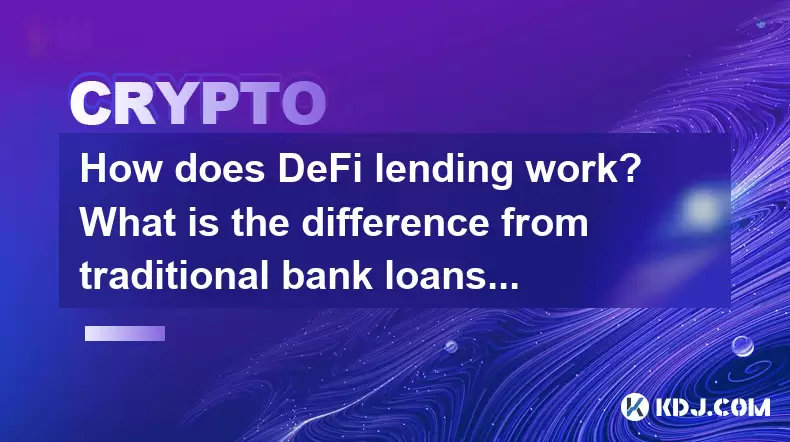
How does DeFi lending work? What is the difference from traditional bank loans?
May 29,2025 at 05:36pm
Introduction to DeFi LendingDeFi lending, or decentralized finance lending, represents a revolutionary shift in the way borrowing and lending are cond...
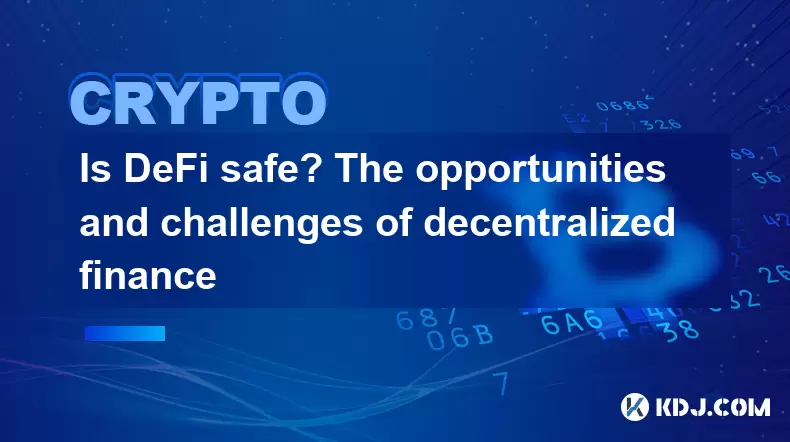
Is DeFi safe? The opportunities and challenges of decentralized finance
May 27,2025 at 02:28pm
Decentralized Finance, commonly known as DeFi, has revolutionized the financial landscape by offering a range of financial services without the need f...
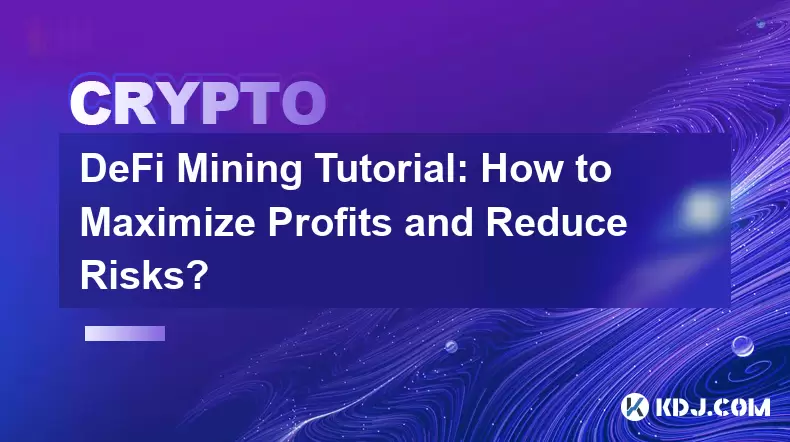
DeFi Mining Tutorial: How to Maximize Profits and Reduce Risks?
May 27,2025 at 07:42am
DeFi, or Decentralized Finance, has opened up a new world of opportunities for crypto enthusiasts looking to maximize their profits through various mi...

How to track DeFi activity on a block explorer
Sep 04,2025 at 05:36pm
Bitcoin's Role in Decentralized Finance1. Bitcoin remains the cornerstone of the cryptocurrency ecosystem, serving as both a store of value and a benc...

What is the difference between DeFi and CeFi? An article analyzing the advantages and disadvantages of both
Jun 13,2025 at 03:57am
Understanding the Foundations of DeFi and CeFiTo fully grasp the difference between DeFi (Decentralized Finance) and CeFi (Centralized Finance), it’s ...

What is DeFi? How to balance risks and returns?
May 31,2025 at 12:22pm
What is DeFi? How to Balance Risks and Returns? Decentralized Finance, commonly known as DeFi, represents a revolutionary shift in the financial ecosy...

How does DeFi lending work? What is the difference from traditional bank loans?
May 29,2025 at 05:36pm
Introduction to DeFi LendingDeFi lending, or decentralized finance lending, represents a revolutionary shift in the way borrowing and lending are cond...

Is DeFi safe? The opportunities and challenges of decentralized finance
May 27,2025 at 02:28pm
Decentralized Finance, commonly known as DeFi, has revolutionized the financial landscape by offering a range of financial services without the need f...

DeFi Mining Tutorial: How to Maximize Profits and Reduce Risks?
May 27,2025 at 07:42am
DeFi, or Decentralized Finance, has opened up a new world of opportunities for crypto enthusiasts looking to maximize their profits through various mi...
See all articles










































































